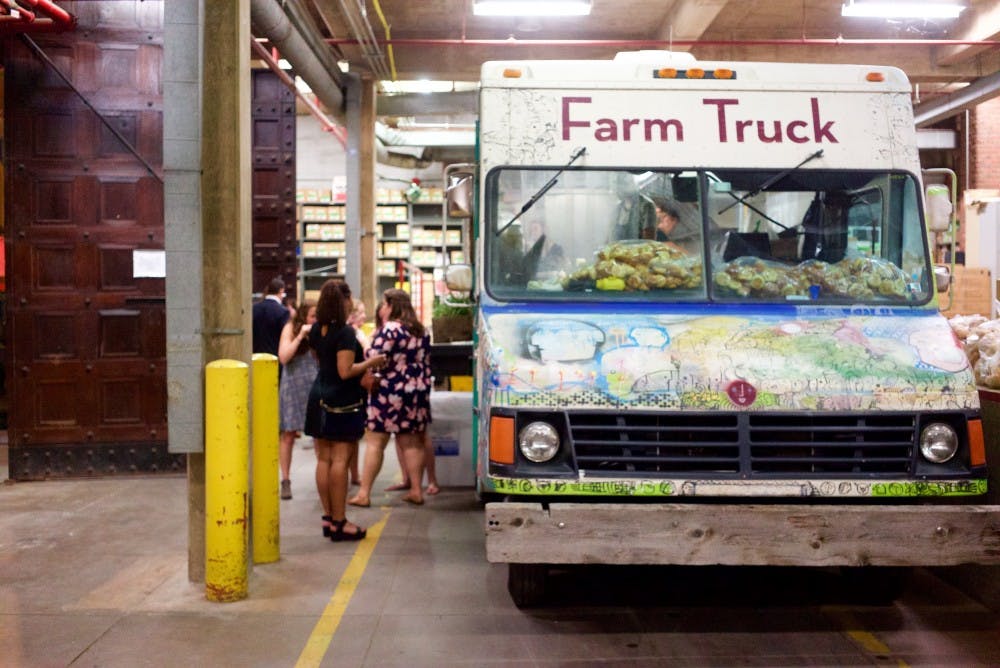What does it mean to be into art? Does it mean that you spend your weekends in the Barnes Foundation or at the Rodin Museum, that you wander around Northern Liberties, peaking into the small independent galleries of up–and–coming artists? Or does it mean that you take art history and fine arts courses and have refined knowledge of the subject? What’s more, what does being into art look like, how does that translate into how you interact with the world? If Friday’s event at the Philadelphia Museum of Art is any indicator, being into art is more of a social concept, with little to do with art itself at all.
 In today’s world, the idea of what is and is not art is so broad and intangible that being “into art” is often more about the social functions that it facilitates, and museums and other organizations have very noticeably and aptly been capitalizing on this. The MoMA’s PS1 Saturday parties in New York, First Fridays in Philadelphia, and Fall into Street Art at the
PMA are all events that organize around the idea of art and culture, but which really use the art itself as a backdrop for social interactions, an excuse to party in a more interesting, respectable way I mean, let’s be real: how many people that attend these parties in galleries
actually pause to appreciate the art the rooms in which they are tossing back cocktails and craft beers? We see more of the art in the background of our friends’ Instagrams than we do with our own eyes when we are there.
In today’s world, the idea of what is and is not art is so broad and intangible that being “into art” is often more about the social functions that it facilitates, and museums and other organizations have very noticeably and aptly been capitalizing on this. The MoMA’s PS1 Saturday parties in New York, First Fridays in Philadelphia, and Fall into Street Art at the
PMA are all events that organize around the idea of art and culture, but which really use the art itself as a backdrop for social interactions, an excuse to party in a more interesting, respectable way I mean, let’s be real: how many people that attend these parties in galleries
actually pause to appreciate the art the rooms in which they are tossing back cocktails and craft beers? We see more of the art in the background of our friends’ Instagrams than we do with our own eyes when we are there.
Friday’s event at the PMA was advertised as “inspired by the city’s vibrant street art and held in the Museum’s hidden tunnel” and, while these things were certainly true, the fact that the event was to take place at the PMA seemed to suggest that there would be some actual art involved. This assumption proved to be incorrect, however, as the entire party took place within the tunnel, with no opportunity to wander into any of the museum’s extensive galleries. The only works of art on display were the few pieces being auctioned off, but these were arranged at the entrance and easily overlooked by anyone bee–lining for the open bar.
While the event lacked art, it was certainly a good party. The open bar was comprehensive and the drink selection was wide. The food provided by Farm Truck was tasty, the venue was intimate but not packed and the music was fun. The event was thoroughly enjoyable, even in the absence of the art we felt had been promised.
What was most notable about Friday’s event was not art, but rather art’s ability to bring people together in a new way. You could be a cynic and say that events like these are ruining the integrity of the art world, that the attendees are posers pretending to be cultured as an excuse to get drunk. But really, when we consider the state of the art world and museums today, functions like these are astoundingly innovative. They are a way of reviving a dying interest group, of making art more tangible and accessible to the general population, a way of sparking interest in those who would otherwise not set foot in a gallery. Fall into Street Art may have fallen flat as an event about art, but it was a resounding success as an event about the museum and about the people who came.

